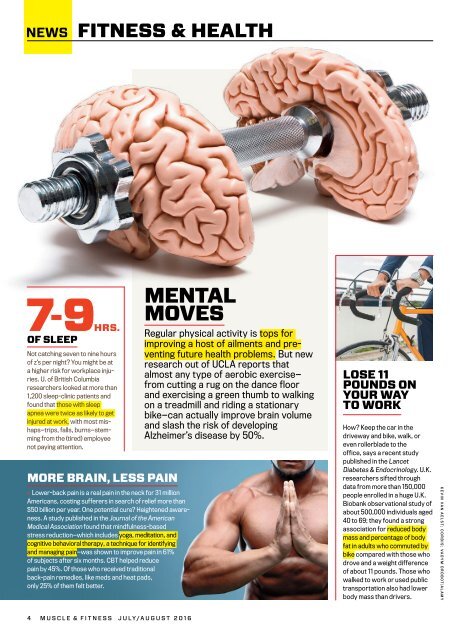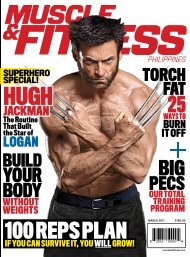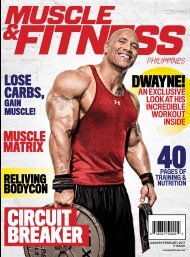Create successful ePaper yourself
Turn your PDF publications into a flip-book with our unique Google optimized e-Paper software.
NEWS FITNESS & HEALTH<br />
OF SLEEP<br />
Not catching seven to nine hours<br />
of z’s per night? You might be at<br />
a higher risk for workplace injuries.<br />
U. of British Columbia<br />
researchers looked at more than<br />
1,200 sleep-clinic patients and<br />
found that those with sleep<br />
apnea were twice as likely to get<br />
injured at work, with most mishaps—trips,<br />
falls, burns—stemming<br />
from the (tired) employee<br />
not paying attention.<br />
MORE BRAIN, LESS PAIN<br />
MENTAL<br />
MOVES<br />
n Lower-back pain is a real pain in the neck for 31 million<br />
Americans, costing sufferers in search of relief more than<br />
$50 billion per year. One potential cure? Heightened awareness.<br />
A study published in the Journal of the American<br />
Medical Association found that mindfulness-based<br />
stress reduction—which includes yoga, meditation, and<br />
cognitive behavioral therapy, a technique for identifying<br />
and managing pain—was shown to improve pain in 61%<br />
of subjects after six months. CBT helped reduce<br />
pain by 45%. Of those who received traditional<br />
back-pain remedies, like meds and heat pads,<br />
only 25% of them felt better.<br />
Regular physical activity is tops for<br />
improving a host of ailments and preventing<br />
future health problems. But new<br />
research out of UCLA reports that<br />
almost any type of aerobic exercise—<br />
from cutting a rug on the dance floor<br />
and exercising a green thumb to walking<br />
on a treadmill and riding a stationary<br />
bike—can actually improve brain volume<br />
and slash the risk of developing<br />
Alzheimer’s disease by 50%.<br />
LOSE 11<br />
POUNDS ON<br />
YOUR WAY<br />
TO WORK<br />
How? Keep the car in the<br />
driveway and bike, walk, or<br />
even rollerblade to the<br />
office, says a recent study<br />
published in the Lancet<br />
Diabetes & Endocrinology. U.K.<br />
researchers sifted through<br />
data from more than 150,000<br />
people enrolled in a huge U.K.<br />
Biobank observational study of<br />
about 500,000 individuals aged<br />
40 to 69; they found a strong<br />
association for reduced body<br />
mass and percentage of body<br />
fat in adults who commuted by<br />
bike compared with those who<br />
drove and a weight difference<br />
of about 11 pounds. Those who<br />
walked to work or used public<br />
transportation also had lower<br />
body mass than drivers.<br />
KEVIN VAN AELST; CORBIS; VADYM DROBOT/ALAMY<br />
4 MUSCLE & FITNESS JULY/AUGUST <strong>2016</strong>















